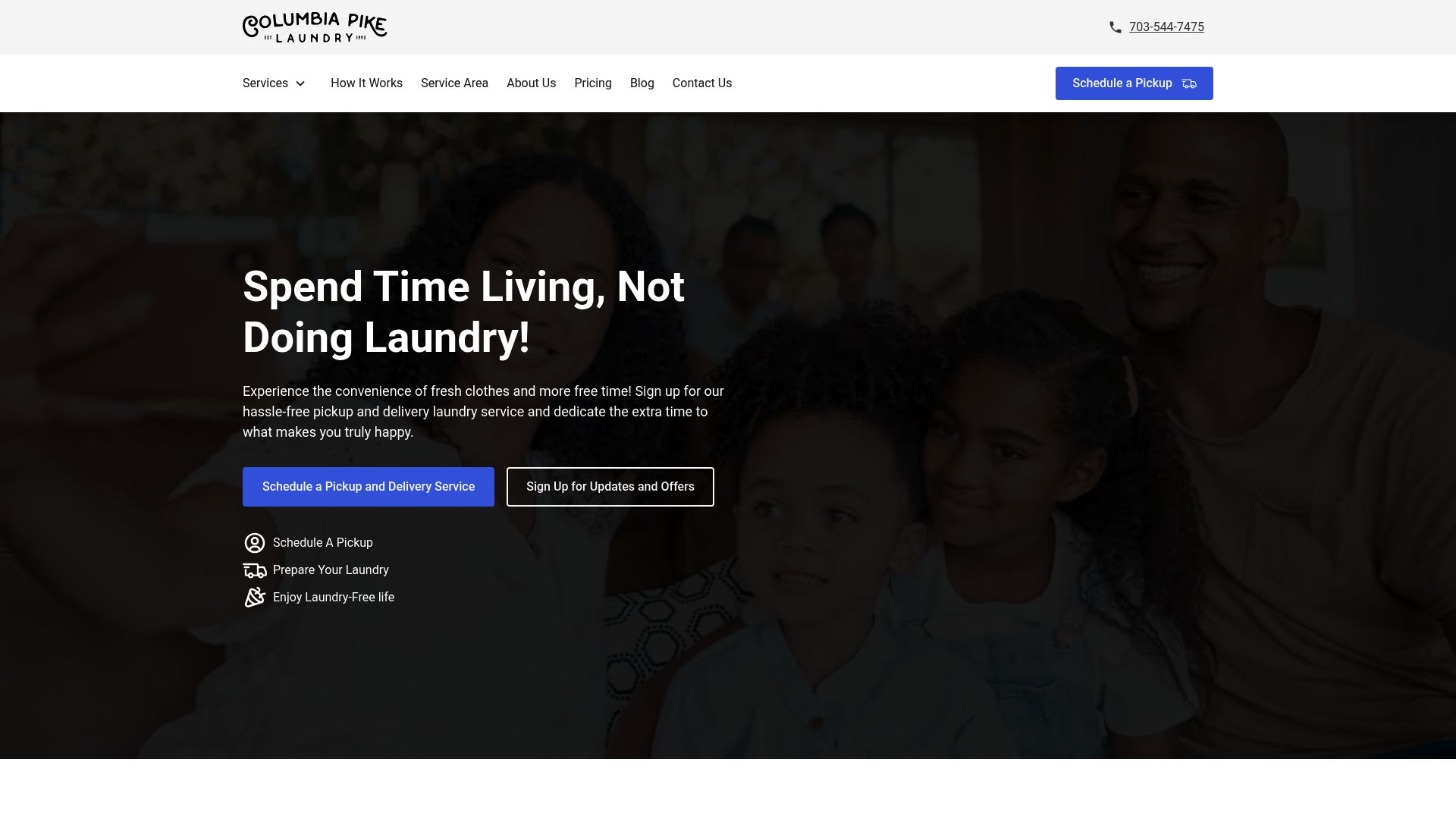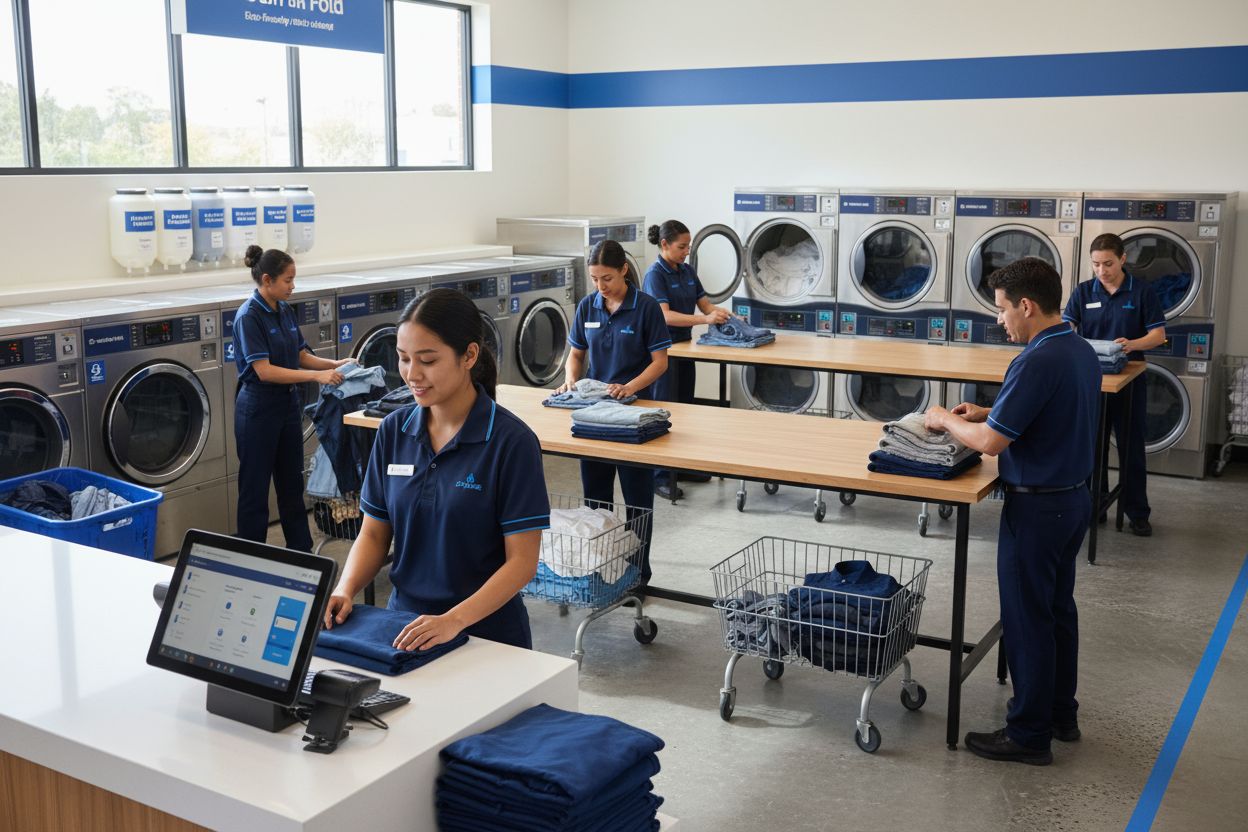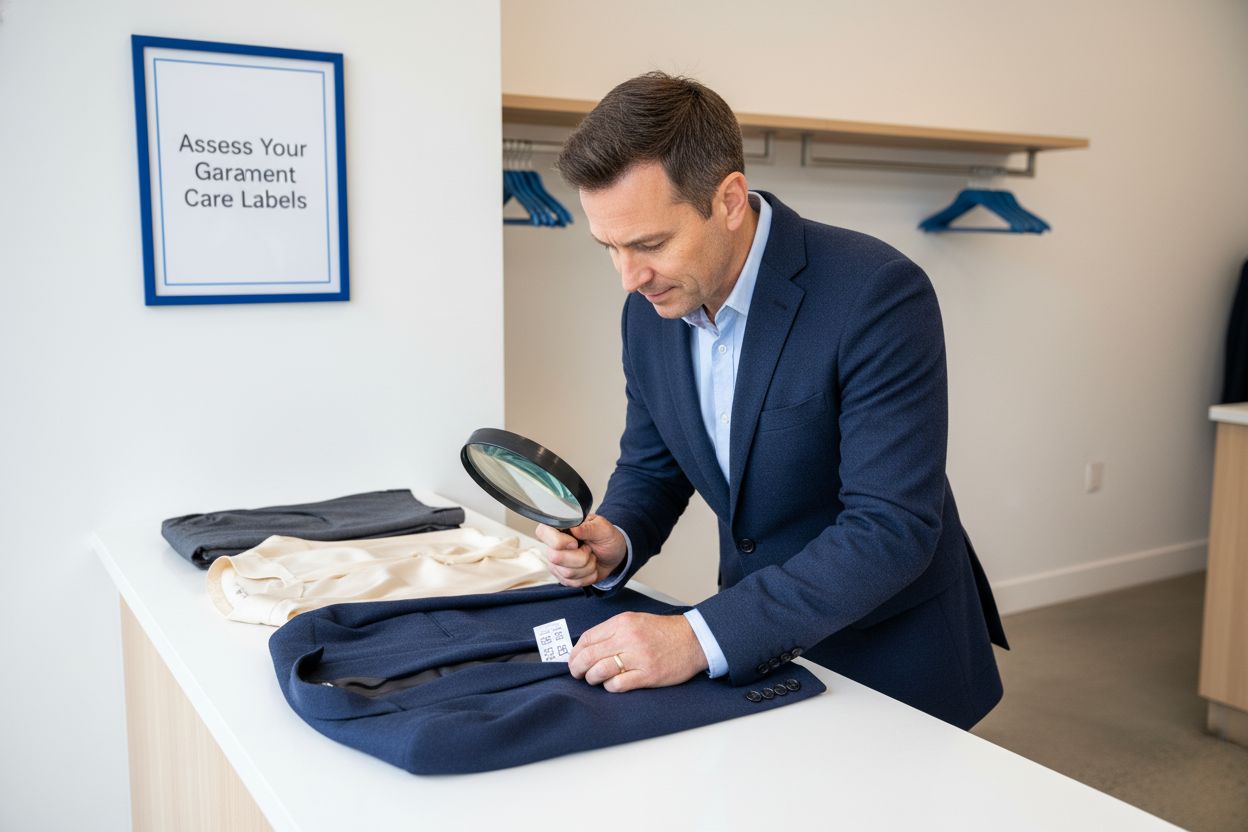7 Key Steps to Understand Laundry Pricing Breakdown

Did you know the average American household spends nearly $1,800 a year on laundry and dry cleaning? Laundry costs can quietly add up, and prices often vary from one service to another. Factors like local competition, special care needs, and convenience fees shape the final bill. By understanding the real reasons behind what you pay, you can make smarter choices and keep more money in your pocket.
Quick Summary
TakeawayExplanation1. Understand laundry pricing factors.Factors like operational costs, service complexity, and local demographics impact laundry pricing significantly.2. Choose the right service type.Different laundry services like self-service, wash and fold, or dry cleaning cater to varied consumer needs and budgets.3. Evaluate pricing models: pound vs. item.Pricing can be based on pounds for bulk laundry or per item for specialized cleaning; assess based on your needs.4. Factor in special care item charges.Some garments require extra care, which results in higher service fees; communicate specific care needs to avoid surprises.5. Consider local providers for quality.Local laundry services typically offer better quality control and communication compared to middle-man platforms.
1. What Influences Laundry Pricing: The Basics
Laundry pricing might seem straightforward. But under the surface, multiple complex factors determine what you will ultimately pay for cleaning your clothes.
At its core, laundry pricing reflects the intricate operational expenses of running a professional cleaning service. Operational costs emerge from several critical areas including equipment efficiency, utility consumption, and service complexity. According to research from the Laundry Association, factors like payroll, utilities, maintenance, and rent significantly impact pricing structures.
Take water consumption as a prime example. The National Park Service notes that an average residential washing machine uses approximately 41 gallons of water per load. For professional laundry services, this multiplies across hundreds of daily loads. Energy consumption compounds these expenses. A typical clothes dryer accounts for about 6% of total energy use, which translates to substantial utility bills for businesses processing large volumes of laundry.
Demographics and local market competition also play surprising roles in pricing determination. A service in a high cost of living area will naturally have different pricing strategies compared to one in a more affordable region. Explore our pricing factors guide to understand these nuances.
Practically speaking, this means consumers should expect pricing variations based on:
Transparent pricing starts with understanding these underlying factors. By recognizing the intricate work behind professional laundry services, you become a more informed consumer.
2. Types of Laundry Services and Their Costs
Not all laundry services are created equal. The landscape of cleaning solutions ranges widely, each with unique pricing structures and specialized approaches to getting your clothes fresh and clean.
Professional laundry services break down into several key categories, each targeting different consumer needs and budgets. According to research from the Bureau of Labor Statistics, consumers encounter various expense models depending on the type of service selected.
Full service laundries represent a comprehensive cleaning solution where professionals handle everything from washing to folding. These services typically charge per pound of laundry or offer package pricing. Explore the different types of laundry services available to understand which might best suit your lifestyle.
The primary service types include:
Pricing varies dramatically based on service complexity. A simple wash and fold might cost $1.50 per pound while specialized dry cleaning could range from $5 to $15 per item. Understanding these variations helps you budget and select the most appropriate service for your specific needs.
The key is matching your specific requirements with the right service type while keeping an eye on overall value and convenience.
3. Pricing Per Pound vs Per Item: What to Know
The world of laundry pricing can feel like a complex puzzle. Two primary pricing models dominate the market: charging per pound of laundry or pricing per individual item.
Pricing per pound represents a volume based approach that benefits customers with larger loads of clothing. This method typically ranges between $1.50 to $2.50 per pound of laundry processed. The Bureau of Labor Statistics tracks consumer expenditures showing how this model offers flexibility for different household sizes and laundry volumes.
Per item pricing becomes more relevant for specialized garments like suits, formal wear, or delicate pieces that require individual attention. Each item might cost between $5 and $15 depending on fabric complexity and cleaning requirements. Learn more about service variations in our comprehensive laundry guide to understand which pricing model suits your needs.
Consider these practical insights when evaluating pricing structures:
Smart consumers understand that the cheapest option is not always the most economical. Factors like fabric care, cleaning quality, and convenience play significant roles in determining true value. Your goal should be finding a service that balances cost effectiveness with exceptional garment care.
4. Additional Charges for Special Care Items
Not all laundry items are created equal. Some garments and textiles require extraordinary attention, which translates directly into additional service charges.
Special care items demand unique cleaning approaches that go beyond standard wash and fold procedures. According to consumer expenditure data, these specialized services reflect the intricate handling and processing required for delicate or complex fabrics. Explore our detailed guide on laundry service variations to understand the nuanced world of professional textile care.
Pricing for special items typically involves multiple factors. The complexity of fabric, required cleaning technique, and potential risk of damage all contribute to elevated service costs. Professional laundry services assess items through a detailed lens that considers material composition, potential shrinkage, color preservation, and intricate cleaning requirements.
Common special care items that incur additional charges include:
Smart consumers understand that these additional charges reflect genuine expertise. The goal is not just cleaning but preserving the integrity and longevity of your most valuable textiles. Always communicate specific care instructions and ask about potential additional fees to avoid unexpected costs.
5. Express and Delivery Fees Explained
Time is money. For busy professionals and families, laundry services offering express processing and convenient delivery represent more than just cleaning services they represent valuable time savings.
Express services transform traditional laundry experiences by prioritizing speed and convenience. These options typically involve additional fees that reflect the operational complexity of accelerated processing. Learn more about pickup and delivery service options to understand how these services can streamline your life.
Delivery and express fees generally break down into several key components. The Bureau of Labor Statistics tracks consumer expenditures showing that convenience comes with a predictable price tag. Factors influencing these additional charges include:
Consumers can expect express fees to range from 25% to 50% above standard service rates. A typical wash and fold service might cost $1.50 per pound standard but jump to $2.25 per pound for same day service. The trade off is clear: pay a premium to reclaim your most precious resource time.
Smart consumers evaluate these services not just by cost but by the value of time saved. Sometimes the convenience of having clean clothes delivered directly to your door outweighs the additional expense.
6. Cost-Saving Tips for Regular Laundry Users
Laundry costs can silently drain your monthly budget. Smart consumers know that strategic approaches can significantly reduce these expenses without compromising clothing quality.
Professional laundry services offer multiple opportunities for cost savings. The National Park Service research highlights several practical strategies for reducing overall laundry expenditures. Explore our comprehensive household laundry guide to unlock more money saving techniques.
Efficient laundry practices start with strategic planning. According to the Laundry Association industry overview, regular users can implement several key strategies to minimize expenses. These approaches combine technological understanding with smart consumer habits.
Powerful cost saving strategies include:
Smart consumers understand that saving money is not just about finding the cheapest service. It is about maximizing value through strategic choices. Consider the total cost of cleaning including fabric preservation, time investment, and potential clothing replacement when evaluating laundry expenses.
7. Comparing Local vs. Middle-Man Laundry Providers
Not all laundry services are created equal. The distinction between local providers and middle-man platforms can significantly impact your cleaning experience, pricing, and overall satisfaction.
Local laundry services represent a direct cleaning solution where the company owns and operates its own facilities. This approach provides greater quality control and accountability. Learn more about the role of laundry services in daily life to appreciate the nuanced differences between service models.
Middle-man providers function as intermediaries, connecting customers with third party cleaning facilities. While these platforms offer convenience, they often introduce additional complexity and potential communication challenges. The Bureau of Labor Statistics tracks consumer experiences showing variations in service reliability.
Key differences between local and middle-man providers include:
Smart consumers evaluate laundry services beyond simple price comparisons. Consider factors like reliability, communication responsiveness, and the ability to handle special care requirements. Local providers often excel in these areas by maintaining direct control over their entire service process.
Below is a comprehensive table summarizing the main elements influencing laundry pricing, service types, pricing models, additional charges, time-saving services, cost-saving tips, and comparisons between local and middle-man providers discussed throughout the article.
TopicDescriptionKey ConsiderationsLaundry Pricing FactorsDriven by operational costs like utilities, payroll, and location.Equipment efficiency and local market rates.Types of ServicesVariations like self-service, wash and fold, dry cleaning.Match service type to needs and budget.Pricing ModelsPer pound vs. per item based on volume and garment type.Suitability for large loads vs. specialized items.Special Care ChargesAdditional fees for delicate or complex fabrics.Preserve garment quality and manage expectations on costs.Express & DeliveryAdded convenience for busy users.Higher fees for faster service and delivery radius.Cost-Saving TipsStrategies include batching laundry and choosing service packages.Effective planning reduces total expenses.Local vs. Middle-ManDirect service control vs. intermediary platforms.Transparency and customization benefits from local providers.
Simplify Your Laundry Costs with Trusted Local Expertise
Understanding the breakdown of laundry pricing can feel overwhelming with all the factors like service type, special care items, and delivery fees influencing the final cost. You want high quality and transparent pricing without surprises. Columbia Pike Laundry, a family-owned Arlington business, addresses these concerns by doing all cleaning in-house—giving you direct quality control and honest pricing you can trust. Whether you need wash & fold, delicate fabric care, or convenient pickup and delivery, we handle it all with customized preferences that protect your clothing and your budget.

Ready to take the mystery out of laundry expenses and enjoy professional care tailored to your needs? Explore our Laundry Relief tips to better manage your laundry routine. Discover our Fabric Care Expertise for handling special items without hidden fees. Schedule your next pickup or drop-off today by visiting Columbia Pike Laundry and reclaim your valuable time now.
Frequently Asked Questions
How do I start understanding laundry pricing breakdown?
Understanding laundry pricing starts with recognizing the various operational costs involved, such as utilities, payroll, and equipment efficiency. Review the different pricing models like per pound or per item to gauge what fits your needs.
What factors influence the cost of laundry services?
The cost of laundry services is influenced by several key factors including service complexity, volume of laundry, and local market rates. Analyze these aspects to anticipate potential pricing variations before choosing a service.
What is the difference between pricing per pound and per item for laundry?
Pricing per pound is a volume-based approach ideal for larger loads, while per item pricing suits specialized garments needing individual attention. Evaluate your laundry needs and choose accordingly to optimize your expenses.
Are there additional charges for special care items in laundry services?
Yes, special care items like silk or leather require unique cleaning methods, leading to additional charges. Always confirm pricing for delicate garments before service to avoid unexpected costs.
How can I save money on laundry services regularly?
To save money, batch your laundry loads and consider off-peak hours for potential discounts. Implementing these strategies can help reduce your overall laundry costs significantly, sometimes by up to 20%.
What are the benefits of choosing local laundry providers over middle-man services?
Local laundry providers offer direct quality control and clearer pricing structures, leading to higher satisfaction. When selecting a laundry service, consider the flexibility and communication advantages of local options.
Recommended
Popular Blog Articles

Meet the Author
Daniel Logan didn’t start CPL because he loved laundry. He started it because his family was drowning in time debt, and laundry was one of the biggest weights.
Mornings were chaos with two kids under 5. Evenings felt like catch-up. And weekends? Gone to sorting socks and folding piles.
He knew his story wasn’t unique. So he built a business that gave families like his just a little bit of breathing room one load at a time.
With no laundry experience but deep tech skills, Daniel rolled up his sleeves, doing every job himself while building systems that turned it into a modern laundry service that saves customers time, simplifies their lives, and delivers reliability they can count on.
That’s where CPL began. Not from a playbook, but from pain. From one dad trying to buy back time: for himself, and for every household like his.





